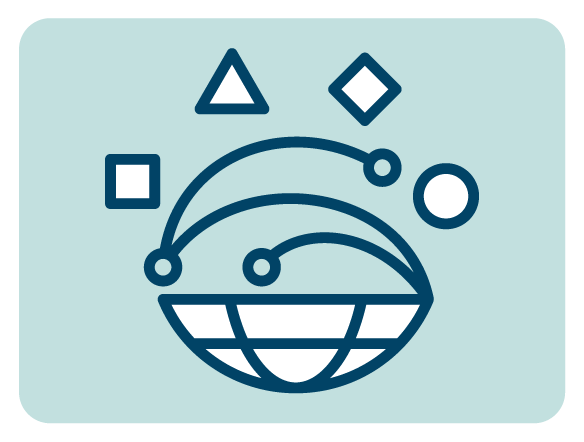Culturally Immersive Field Trips to Japan with Virtual Reality
Learning Outcomes



Context
This activity is an optional, extra-credit assignment for JAPAN 2202: Intermediate Japanese II, a course focused on moving students beyond basic grammar toward more nuanced emotional expression. The assignment is situated within a module on Japanese onomatopoeia, which are essential for conveying atmosphere and feeling in the language.
The goal is to provide a culturally immersive experience that connects students’ personal interests in anime with intermediate-level language practice. Students are challenged to write a persuasive and emotionally descriptive blog post or diary entry about a virtual "pilgrimage" to a real-world location from their favorite anime. To succeed, they must use specific onomatopoeic vocabulary learned in class, conduct light research, and structure their writing to express a deep, personal connection to the place they visit.
Implementation
Before implementing the activity, Larson ran a crucial pilot session with students from Cornell’s Upward Bound program. This trial provided insight into how students would engage with the immersive technology and informed the final assignment design. The implementation in the course was then scaffolded over several weeks.
- Introduction and scaffolding: Two weeks before the VR sessions, Larson announced the extra-credit opportunity. She provided resources on relevant onomatopoeic vocabulary and explained that students should come prepared with the real-world address of a location from their favorite anime.
- Logistics and final preparation: Students were required to sign up for a 20-minute time slot on the Canvas Calendar, either individually or in small groups. A final preparatory step was a mandatory survey due the day before their visit, where they submitted their chosen locations' addresses to ensure the brief VR session would be used efficiently.
- The experience and deliverables: During their scheduled time, students used the VR equipment to visit their locations. The primary deliverables were a diary or blog entry in Japanese and photographic "proof" of their virtual visit.
- Accessibility and alternatives: An equitable alternative "Scavenger Hunt" was provided for students who could not or preferred not to use VR, sending them to the physical manga collection in the library to complete a similar reflective writing assignment.
Challenges
- Instructor (in)experience: Prior VR experience may change an instructor’s idea of what can or cannot be accomplished in a VR activity.
- Before introducing the activity in her Intermediate Japanese II course, Larson, who had no prior VR experience, first ran a trial with a smaller group of students from Cornell’s Upward Bound program. This pilot session provided crucial insights into how students would engage with the immersive technology and informed the design of the final assignment.
- Instructor (in)experience: Prior VR experience may change an instructor’s idea of what can or cannot be accomplished in a VR activity.
- Equipment accessibility: Centralized campus resources are key to overcoming barriers to specialized technology like VR.
- While individual student access to VR headsets is an equity challenge, this can be addressed by institutional support. The Center for Teaching Innovation’s Creative Technology Lab (CTL) bridges this gap by maintaining a fleet of headsets and providing trained staff to help instructors facilitate these immersive learning experiences.
- Equipment accessibility: Centralized campus resources are key to overcoming barriers to specialized technology like VR.
- Planning for accessibility: It is essential to provide an alternative for students who cannot or prefer not to engage with immersive technologies like VR.
- To ensure the activity was inclusive, an equitable, non-VR alternative was designed for students who could not participate due to motion sickness, discomfort, or other limitations. These students instead visited the library’s extensive manga collection, using that physical "pilgrimage" as the inspiration for the same final reflective writing assignment that required the use of Japanese onomatopoeia.
- Planning for accessibility: It is essential to provide an alternative for students who cannot or prefer not to engage with immersive technologies like VR.
Reflection and Future Directions
The activity was highly successful, generating significant excitement among students, most of whom had never used VR before. The learner autonomy—allowing students to choose a personally meaningful destination—was a major bonus and led to deep engagement. Student reflections, shared in Japanese on a Canvas discussion board, expressed awe at being able to virtually visit the other side of the world and see the real-life settings of their favorite stories.
Based on student feedback and her own observations, the instructor has identified several future directions:
- Broaden assignment themes: The instructor plans to develop additional VR assignment options in the future. For example, instead of the open-ended "anime pilgrimage," a new assignment could be more directly tied to specific course themes by asking students to visit and describe natural landmarks (like a volcano or a beach) following a corresponding vocabulary lesson.
- Expand the program: The instructor plans to create a short VR "teaser" session for beginner-level Japanese courses to spark early interest in the language and culture.
- Foster conversation: A new "Conversation Hour" is being developed to connect language learners with native Japanese-speaking students, using VR as a shared experience to inspire authentic dialogue.
